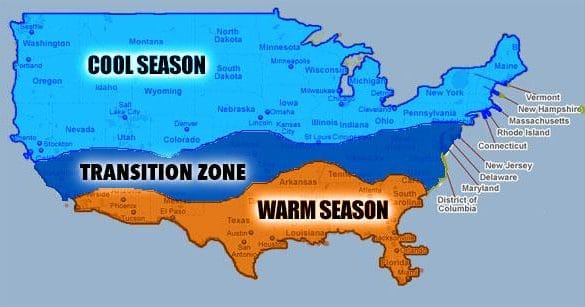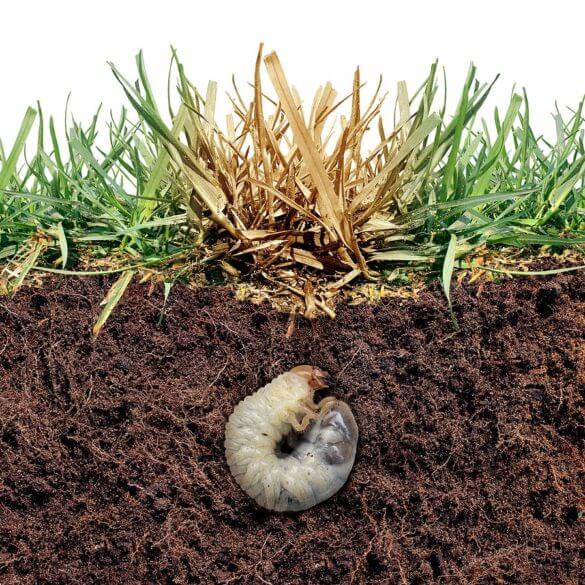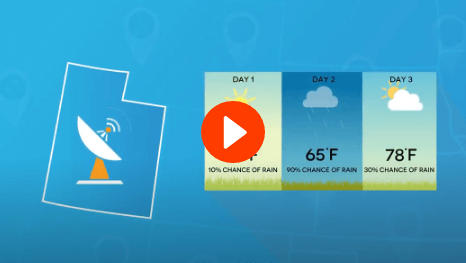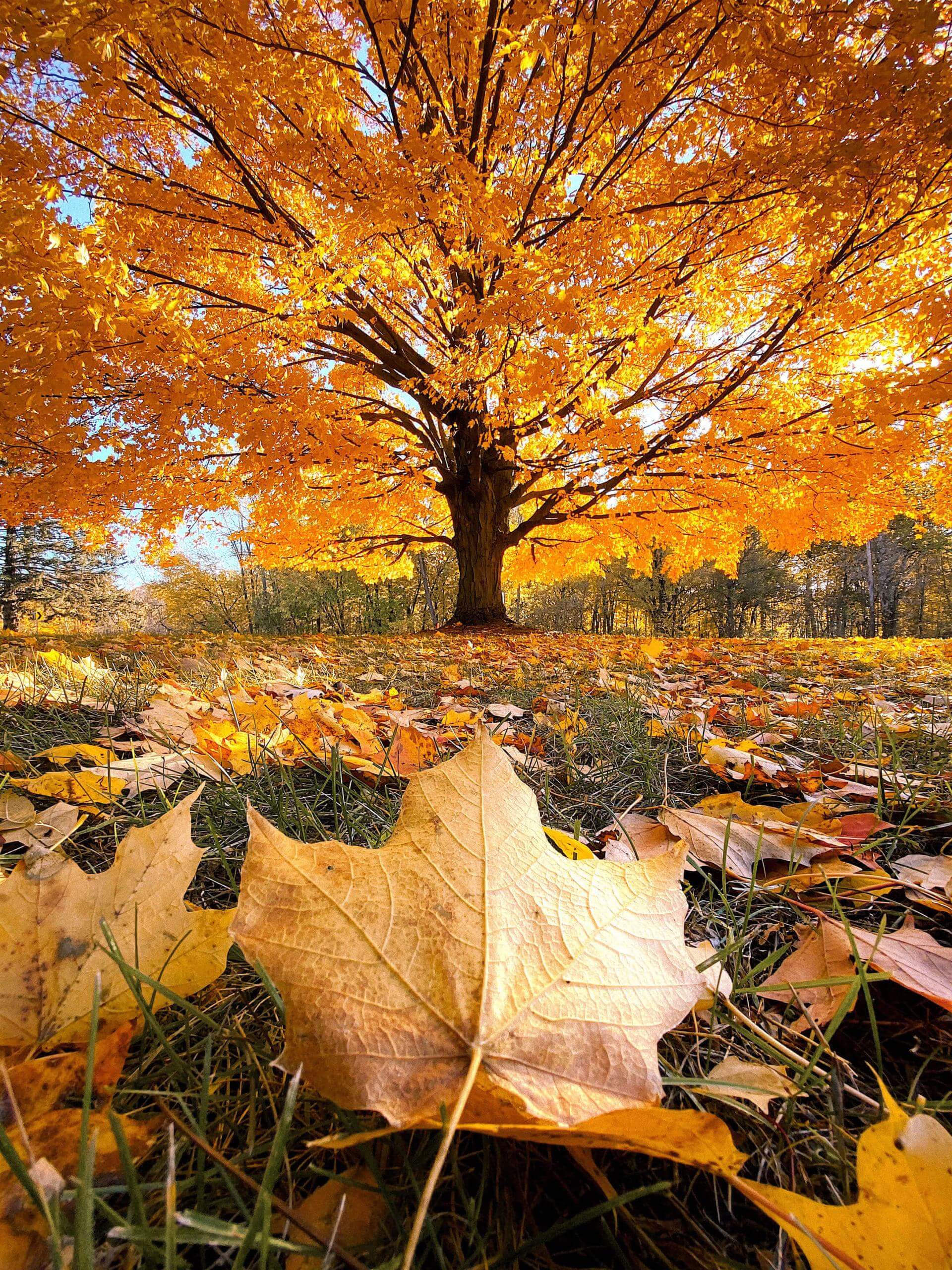Vibrant, green grass brings a burst of life to commercial concrete jungles. But maintaining a lush lawn through lawn watering isn’t as easy as it may seem; a striking commercial exterior requires dedication, consistency, proper tools, and education — knowing the best time to water the grass, how to use lawn fertilizer, how to make the grass green, when to stop lawn watering, and so much more.
A recent lawn watering
survey of US adults by the National Association of Landscape Professionals revealed that:
- One in three adults don’t know when watering their lawn is appropriate
- 31% of adults don’t know how to make the grass green
- 57% falsely believe that a lawn that is not green is not healthy
- 64% have wrong ideas about when to fertilize their grass
As a property manager, it’s easy to feel like you have priorities more pressing than lawn care, but your landscaping is one of the first things that potential clients and customers notice. What kind of impression is your grass making? Are you welcoming customers with the warm appeal of green grass or deterring potential clients with a neglected property exterior?
Smart Rain is an expert in lawn care. In addition to our water-saving solutions, we offer an abundance of information and tips that will help you master the looming task of lawn care on your to-do list. Our aim is to help you maximize success in business by drawing in customers with your luscious lawn. Here, you’ll find the answers you need to achieve this goal in our comprehensive guide.
The importance of knowing your grass type
Did you know that different types of grass require unique methods of care? There are two varieties of grass grown in the United States: cool-season grasses and warm-season grasses. These grass types have distinct sun, soil, and climate requirements.
The warm-season grasses, which include Bahiagrass, St. Augustine Grass, Zoysia Grass, and more are best suited to the southern portion of the country while the cool-season grasses (Kentucky Bluegrass, Perennial Ryegrass, Tall Fescue Grass, etc.) favor the climate of the northern part. The states running through the middle section of the country can sustain a mix of both (Arizona, Kansas, Oklahoma, Kentucky, etc.). Take extra care to know what sort of lawn watering your type of grass needs

While most cool-season grasses should be mown no shorter than two or three inches in length, they work with most types of soil. On the other hand, warm-season grasses can be cut shorter but need specific types of soil. Learn what kind of grass you should have based on your climate so you can care for it according to its seasonal needs, which we will discuss in more detail below.
How to care for your lawn in each season
Lawn watering and care requires a different approach depending on the season, weather, and location. Below, you’ll learn about when and how much mowing, watering, and fertilizing can help you during every month of the year.
EARLY SPRING LAWN PREPARATION
Early spring is known as “the preparation season.” Everything you do from March to mid May will determine whether or not you’ll have that rich, green curb appeal for the upcoming year.
TUNE UP ALL LAWN EQUIPMENT
One of the first things to do at the onset of spring is to make sure all your lawn equipment is in tip-top shape and ready to handle weekly maintenance demands. Generally, you should:
- Empty mower gasoline: Any gasoline that has been sitting in your mower all winter has accumulated moisture. This accumulation of moisture could damage the engine, so don’t take any risks. Replace it with fresh fuel!
- Clean under the mower: It’s recommended that you clean under the mower once per month to prevent lawn diseases and avoid unexpected breakdowns in the middle of a mowing job.
- Sharpen mower blades: The more you mow, the duller the blades get. So, for every 25 hours of mowing time (that’s about twice a year if you mow for an hour once each week), sharpen or replace the blades to make sure your grass is cleanly cut. A dull blade may cause jagged grass edges, which lead to discoloration and lawn diseases. Backup blades only cost about $20.
- Test sprinklers and may any repairs: While you don’t necessarily need to start lawn watering yet, you should know the condition of your sprinklers before the hot season arrives so you don’t end up with dead grass. Give them a test run and make note of any areas of the irrigation system that are leaking or otherwise defective.
- Replace mower air filters and spark plugs: Just like your car, a lawn mower needs periodic maintenance. For every 100 hours of operation, the spark plugs should be replaced, and the air filter should generally be swapped for new ones every three months. You can do all this for less than $20 total for a standard lawn mower.
RAKE
As you prepare your lawn for the warm weather, gather this debris and rake out the dead grass (leave any fresh grass clippings) with a spring-tine rake, using an upward pulling motion. Raking keeps matted grass clumps caused by snow mold from inhibiting new grass growth. The best time to do this is when the soil is still fairly firm so that you don’t accidentally pull out healthy grass. This can be very helpful especially before lawn watering.
DETHATCH
The thatch is a layer of your lawn that consists of roots, dead grass shoots, and stems. It sits between the grass and the soil surface. In moderation, the thatch can help a lawn retain moisture and act as a protective, cushiony layer against temperature extremes. When it gets too thick, though, it can cause diseases and pest problems.
Dethatching is the process of removing excess thatch in the spring to promote proper lawn watering drainage. You can use a thatching rake or a power rake for the dethatching process, or you can hire a service provider to do this for you.
MID-TO LATE-SPRING LAWN PREPARATION
Mid to late spring is when you’ll see your lawn start coming out of hibernation. Be prepared to tackle late-spring lawn care tasks to make sure your grass is flourishing by summertime.
FEED THE BARE SPOTS
Ever heard of the term “winter kill”? It refers to the harsh season’s ability to severely damage a once-beautiful lawn. When the snow melts away for the last time, it leaves behind unsightly brown or bald patches, but don’t worry — these are easy to fix and regrow! A little later in the spring (or in the fall), you can overseed the bare spots on the lawn with a slow-release nitrogen lawn fertilizer. Then, give it five weeks and add a quick-release nitrogen feed to the lawn.
AERATE
Winter snow has a compacting effect on lawns. Aeration is the process of puncturing the surface with small holes to encourage the easy uptake of water, nutrients, and air needed for the grass to grow stronger and more resilient. This is typically done in the spring for warm-season grass, but cool-season grass can be aerated in the fall or the spring.
TREAT FOR WEEDS
Depending on your climate, you may also be prone to crabgrass and weeds. Stock up on pre-emergent herbicides and grass seed and follow the instructions on the product label in your applications. This will give you a better chance of preventing pesky and persistent summer weeds.
MOW
You can mow your lawn quite early in the spring, but be sure to mow high. The mower deck should be set to the highest height for your grass type (three to four inches is usually optimal). Remove only a third of the blade length at a time.
BEGIN LAWN WATERING
Your grass doesn’t need to be cut in the spring until it starts growing. When you notice those blades gradually elongating, it’s time to put the sprinklers on a schedule for the year. To avoid watering wastefully through evaporation, watering your lawn either early in the morning or in the evening is best the practice.
More Ways to Conserve WaterEARLY SUMMER LAWN WATERING TIPS
Even the most extensive spring preparation doesn’t negate the lawn care required in the swelling heat of summer. Follow these tips to keep the grass in good shape well into July.
CHECK FOR AND TREAT GRUBS
If you notice discolored, wilting patches of grass, grub worms may be to blame. These pests feed on the root system of your lawn. Thankfully, they can be treated pretty easily with a chemical pesticide. To see if your lawn is infested, pull up a small patch of grass and look for C-shaped worms. If you see more than 10 within a foot of each other, you should follow the instructions on your insecticide of choice and treat the lawn. Insecticide products typically cost between $50 and $75 per application.

CUT THE GRASS
Once summer rolls around, most businesses have to mow their lawns multiple times each week to keep up curb appeal. If you aren’t mowing this frequently, it is recommended that you do, so that you won’t have to cut off more than a third of the lawn blades at a time.
TREAT WEEDS
Despite your best attempts to prevent weeds with pre-emergent herbicides in the spring, some weeds will persist. Wherever possible, try to pull them out with a garden fork. When the situation seems beyond your ability to control by weeding manually, you should turn to a post-emergent herbicide.
MID- TO LATE-SUMMER LAWN CARE
Keeping your lawn green from mid July to late September requires acute knowledge of late summer lawn watering, weeding, and mowing techniques.
WATERING THE GRASS PROPERLY
Many people practice short daily sprinkler cycles in their lawn care regimen, but this is a common mistake that leads to shallow grass roots. It’s actually better to water the grass infrequently in larger quantities to encourage deep root growth.
In the hotter seasons, the best time for watering grass is late at night to prevent burning the grass. During the more temperate weather, lawns typically only need an inch of water per week. You can measure how long it takes for your sprinklers to output this amount by putting out a pie dish or saucepan and setting a timer for how long it takes to catch an inch of water. This helps you know when to shut off the sprinklers and avoid over lawn watering.
An easier way to measure is with a Smart Rain irrigation system, which automatically shuts off when a section of lawn has been watered sufficiently. See how Smart Rain moisture sensors work:

PREVENT PEOPLE FROM PARKING ON THE GRASS
Tenants, employees, and other patrons of commercial buildings may often opt to park over the grass when parking spaces are limited, which can quickly kill the grass. This is a practice you should discourage, whether by putting up no-parking signs or charging fees for violations.
KEEP UP WITH WEEDING AND MOWING ROUTINE
Weeding isn’t a “one-and-done” type of task but an ongoing process. As you see weeds pop up, continue to pull them out and administer post-emergent herbicides according to the label if they start spreading. Continue mowing on a consistent basis and remember to keep the blade height of the mower around three inches so that the roots will grow deeper with longer grass.
FERTILIZE WARM-SEASON GRASS
While cool-season grasses should be fertilized in the fall or early spring, warm-season grasses need summer fertilization to continue growing strong. Even if you’ve already fertilized earlier on in the year, the soil will have already absorbed most of the nutrients within six to eight weeks of application, so you should replenish it later in the summer.
PICK UP LITTER
EARLY FALL MAINTENANCE TIPS
It’s generally agreed that fall is the most important season for lawn care. It’s when most people “put their lawns to bed” for the season and nourish it for best results in the upcoming year.
OVERSEED/PATCH SPOTS
When the hot, dry days of summer are over, the weather is perfect for overseeding bare spots on the lawn. To make these repairs, start by raking up the dead grass and breaking up the soil. You’ll need about an inch of compost, which you should work into the soil along with grass seed made for full sun or shade, depending on the location of the bare patch. You can spread these evenly with a hard-tooth rake until they reach half an inch deep into the soil.
Once planted, water the bald patch every day to keep the spot wet enough for the grass seeds to germinate. It helps to put fresh grass clippings over the top to prevent dryness. Avoid mowing over the newly planted area until new grass is at least an inch tall.
People love to lounge around on the cool, soft grass during those lazy summer days. But lounging is often accompanied by litter, which can damage both the grass and the tools used to care for the grass. Do a quick trash pickup a few times a week. This costs nothing but a little bit of your time.

MID- TO LATE-FALL LAWN CARE
This is the time to do those final jobs that will determine the health of your lawn for the next year. When done properly, these steps make the springtime lawn care regimen easier.
CLEAN DEBRIS
Before the first snowfall, do a sweep of your lawn to make sure there are no rocks, twigs, trash, or other debris that could get trapped under a blanket of snow and damage the grass. Leaves are okay to keep, but put them through a mulching mower to break them up, if you have access to one. In their mulch form, they can nourish the soil.
FERTILIZE
Fall is the time to fertilize cold-weather grass so that it can retain nutrients within the root system during its dormant time in the winter. When the warm weather returns, the grass will be ready to spring back up. If you don’t know how to use lawn fertilizer, scroll down and read more on this topic under “
How to Use Lawn Fertilizer Properly.”
LOWER MOWER HEIGHT
You’ll still need to mow the lawn in the fall, but the frequency and the height can be reduced; tall grass can be a tangled, fungal problem in the winter. When you cut the lawn shorter, you help to prevent winter fungal diseases that may be a cold weather problem in your area. Toward the end of fall, cut the grass approximately an inch or two shorter than what you’ve been doing throughout the year up until the grass stops growing (the same goes for watering). You can go even shorter than this for your last mowing.
LAWN WINTERIZATION
Don’t make the mistake of forgetting about your turf in the winter. Just because it’s dormant doesn’t mean it’s not affected by what you do to it in the cold season. Keep these tips in mind when the snow starts to fall.
AVOID MAKING FOOTPATHS IN THE GRASS
One of the most important winter lawn care strategies you can practice is avoiding heavy vehicle and foot traffic on snow-covered grass. Snow is already heavy on the lawn, and when you walk or park on it, you compact the soil further and make it hard for the grass to grow again in the spring.
BE WARY OF SALT
Most of us throw salt on the sidewalk and driveway without thinking about how it will affect the grass when that salty snow is shoveled onto the lawn. While ice melt is a handy tool for making those icy mornings safer, sidewalk salt can leach into the soil of your lawn and make it difficult for the root system to absorb nutrients.
If you have to use salt around your grass, use calcium chloride, a more lawn-friendly alternative to the harmful sodium chloride. Likewise, avoid shoveling roadway or sidewalk snow onto the grass when you aren’t sure what kind of ice melt has been used.
WATER AND SEED WHEN NEEDED
On sunny, dry, and windy winter days, your lawn can become dehydrated. If you’re experiencing a dry winter, it’s a good idea to water your lawn deeply when temperatures are above freezing (around 40 degrees). Winter watering also prevents cold-weather mites from feeding on your turf and causing discoloration and damage. For cool-weather grasses, you can even spread seed over snowy ground to get a jump start on treating those unsightly spring bare patches!
General lawn watering & care tips
HOW TO USE LAWN FERTILIZER PROPERLY
Making the extra effort to fertilize your lawn effectively keeps weeds at bay and helps your lawn stay healthy and green all summer. If you’re new to the process, we’ve outlined three simple steps to help you master the art of lawn fertilization in no time.
- Mow and water first. Before you can apply fertilizer, you need to adequately prepare your lawn. The best way to do this is to mow and then water. When your grass is short and close to the soil, it can absorb more of the fertilizer’s nutrients. Watering your lawn prepares your soil to accept the fertilizer, allowing for longer-lasting effects.
- Select a fertilizer. When choosing a fertilizer, there are several factors to consider, including the type of soil, the climate, and the type of grass you have.
- Apply the fertilizer. Once you’ve selected a fertilizer that aligns with your needs, it’s time to apply it. You might think you’ll save time fertilizing by hand, but it’s far better to invest in a spreader. When spreading your fertilizer, do so in straight lines — similar to how you would mow the lawn. Take your time and read your spreader’s user manual. This will ensure you cover the entire lawn evenly.
- Invest in a smart irrigation system. If you truly want full control over your lawn, consider investing in a SmartRain irrigation system, which uses cutting-edge technology to deliver real-time status reports and control to desktops and mobile devices, wherever you are in the world.
HOW TO MAKE THE GRASS GREEN THIS SUMMER
If the only thing green at your house is your envy of your neighbor’s yard, all you likely need is good lawn care information. Check out our suggestions below for getting greener grass this summer.
WATER WISELY
When you water your lawn too little, you’ll get brown and yellow patches of grass that ruin your outdoor aesthetic. It’s true that your lawn needs more water in the summertime, but too much can be as bad as not enough. Overwatering a lawn can turn it into a breeding ground for bugs and weeds.
PROTECT AGAINST PESTS
Speaking of bugs, you’ll want to take steps to ensure they don’t consider your lawn their own personal entrée. Most insects hide in the thatch that can gather on lawns, which is just one more good reason to aerate! If your lawn is thinning out or losing color, bugs may be to blame, so call a professional landscaping company to apply insecticide.
OUTWIT YOUR WEEDS
Weeds tend to grow on your lawn during the summer like, well, weeds! But the types plaguing you now may be different than those you had in the spring, so get a professional to identify and treat them.
TAP INTO SMART RAIN TECHNOLOGY
For true control over how your lawn looks, tap into the power of Smart Rain’s technology via our smart irrigation systems. Everything is at your fingertips thanks to our mobile app that lets you know exactly what’s going on with your lawn at any time no matter where you are. Get in touch with us today to learn more.
HOW TO DETERMINE HOW MUCH WATER YOUR GRASS NEEDS
It’s indisputable that your lawn and garden need water to live, but how much is enough, and how much is too much? Too little water will stunt or even kill your lawn, garden, and container plants, but too much can be just as bad — and cost you money. At a time when we’re all encouraged to conserve water, it’s good to know how much water to give to your yard.
WHEN THERE'S TOO MUCH WATER
It’s sometimes hard to tell when your garden or lawn is getting too much water. Most lawns thrive on an inch of water every week through deep, infrequent waterings. Cut back on your watering regimen if you notice:
- Runoff: If water is running onto the sidewalk while you’re watering the grass, this is a sign that the soil can’t absorb any more because it’s already well-watered and probably overwatered. What’s worse, the runoff could be taking the lawn’s nutrients into the street with it.
- Squishy spots: Take a walk around your lawn and feel for spongey, squishy spots. This is a surefire indication of oversaturation.
- Weeds, fungi, thatch, and pests: Giving your grass too much water creates the perfect conditions for pests and unwanted growth. Watch for mushrooms, rapid weed growth, influxes of bugs, and discoloration to indicate the presence of any of these conditions.
- Wilting plants when the soil is wet: Roots need air as well as water, and constantly flooding the soil means there’s not enough air getting to the roots. That causes them to rot.
- Brown, wilting leaves: This is also a symptom of too little water. When dehydrated, wilting leaves are dry and brittle. With too much water, leaves feel soft and limp to the touch.
- Leaves falling off: When new leaves fall off the plant as much as older ones, it’s a sign of overwatering.
- Blisters on leaves: Over-watering causes leaf blisters or lesions, which burst and turn into brown or white growths. This happens when leaf cells absorb more water than they can use.
WHEN THERE'S NOT ENOUGH WATER
Here are some signs to watch for to ensure plants are getting enough to drink. More water is probably needed if you notice one or more of the following symptoms:
- A change in grass color from green to blue-gray
- Delayed grass growth
- Wispy, wilted blades of grass
- Lawn does not bounce back when you walk on it
- Soil near the base of the plants is hard, dry, and cracked
- Plants have yellowing or dried leaves near the bottom of the stalk
- Leaves show yellow or brown spots
- Flowers fall off before they wilt
- Roots show at the surface of the soil
- The whole plant withers and dies
- Plants in containers feel light when you lift them up
A GOOD TEST TO CHECK SOIL HYDRATION
To see how well your lawn is responding to its current water levels, push your finger into the soil or dig a small hole two to four inches deep. If it’s still moist that deep, you have enough water for your plants. If you find it’s moist and your plants show any of the signs listed above, then reduce your watering.
As an alternative approach, consider Smart Rain’s smart watering systems. Our systems notify property owners of important irrigation management details like water flow, moisture levels, and more — all through advanced sensors and innovative technologies. Coupled with the Smart Rain app, you can control your sprinklers, view rainfall levels, and get detailed reports from the convenience of your smartphone.
HOW TO CARE FOR YOUR PARKING STRIP
If you’re dreading working on your parking strip, you are not alone. The parking strip of grass typically runs between the sidewalk and the street, and it’s a notoriously difficult area to keep looking good. This is because the parking strip is hard to irrigate properly, and it seems to have a high concentration of weeds. Here are some tips to tame the parking strip beast and get it looking as good as the rest of your property.
CHECK CITY CODES
It seems like your narrow parking strip is always overwatered or underwatered, causing the grass to look patchy and dead. So how do you figure what will be best to do with it? Start by checking the city code to see if there are any requirements.
USE A DRIP IRRIGATION SYSTEM
Using a drip irrigation system rather than traditional sprinklers could be a good move for a lawn that’s difficult to water. This will reduce the amount of run-off from the sprinklers and ensure more water is absorbed into the ground. Drip systems work very well when coupled with a xeriscaping landscape plan.
PUT IN WATER-WISE PLANTS
With grass being so hard to maintain on a parking strip, why not replace it with water-wise plants instead? Many native grasses, flowers, and trees require less water than other species of plants and can help decrease the need for excess water. Start by lining the park strip with weed barrier fabric and then follow up with a thick layer of mulch around the plants. This will help retain moisture and keep weeds to a minimum.
AVOID OVERPLANTING
When you’re planning your park strip design, keep in mind that this area will see a lot of foot traffic. When people access your facility, chances are they will walk across the park strip if it is convenient. Be careful not to overplant it so that there’s room for people to walk without killing the plants. Have enough hard surfaces like flagstone, gravel, or bricks to give visitors easy access to your premises.
HOW TO MAKE YOUR LAWN MORE ECO-FRIENDLY
Everyone wants a beautiful yard, but nobody wants to overconsume water and end up with a sky-high water bill. Check out these simple ways to make your yard beautiful and more water-friendly all at once.
- Invest in native plants. Like we mentioned before, native plants are better suited to your unique environment and require less water and care than non-native plants. They can add beauty to your yard, too! Look for native plants at your local nursery.
- Use raised beds or grow boxes. These can help you fit a lot of garden into a small space! You get to control the type of soil that goes in the boxes, and if you water with a drip system instead of overhead spray, you’ll save water, get healthier plants, and enjoy fewer weeds.
- Plant a water-wise lawn. Some types of grass use a lot more water than others. Plant water-wise grass varieties that are best suited for your climate. You’ll use less water and have to work less hard to have a beautiful lawn.
- Let us help. Smart Rain’s innovative smart water systems notify property owners of important irrigation management details such as water flow, moisture levels, and more. With a Smart Rain system, you can manage your property’s water usage more effectively and save on your water bill.
Take the work out of lawn care with Smart Rain
With so much on your plate, you may not have the time to perform certain lawn care tasks such as measuring how much water your lawn is getting. Fortunately, you have the option to delegate some of the work to your friends at Smart Rain. Our cutting-edge technologies take the guesswork and frustration out of lawn care, making it more likely that you get a green yard every year. See for yourself how we’ve lifted the burdens of property managers just like you!

Call us today for more information on our irrigation solutions or head back to our learning center for information on related topics.
Request Demo







